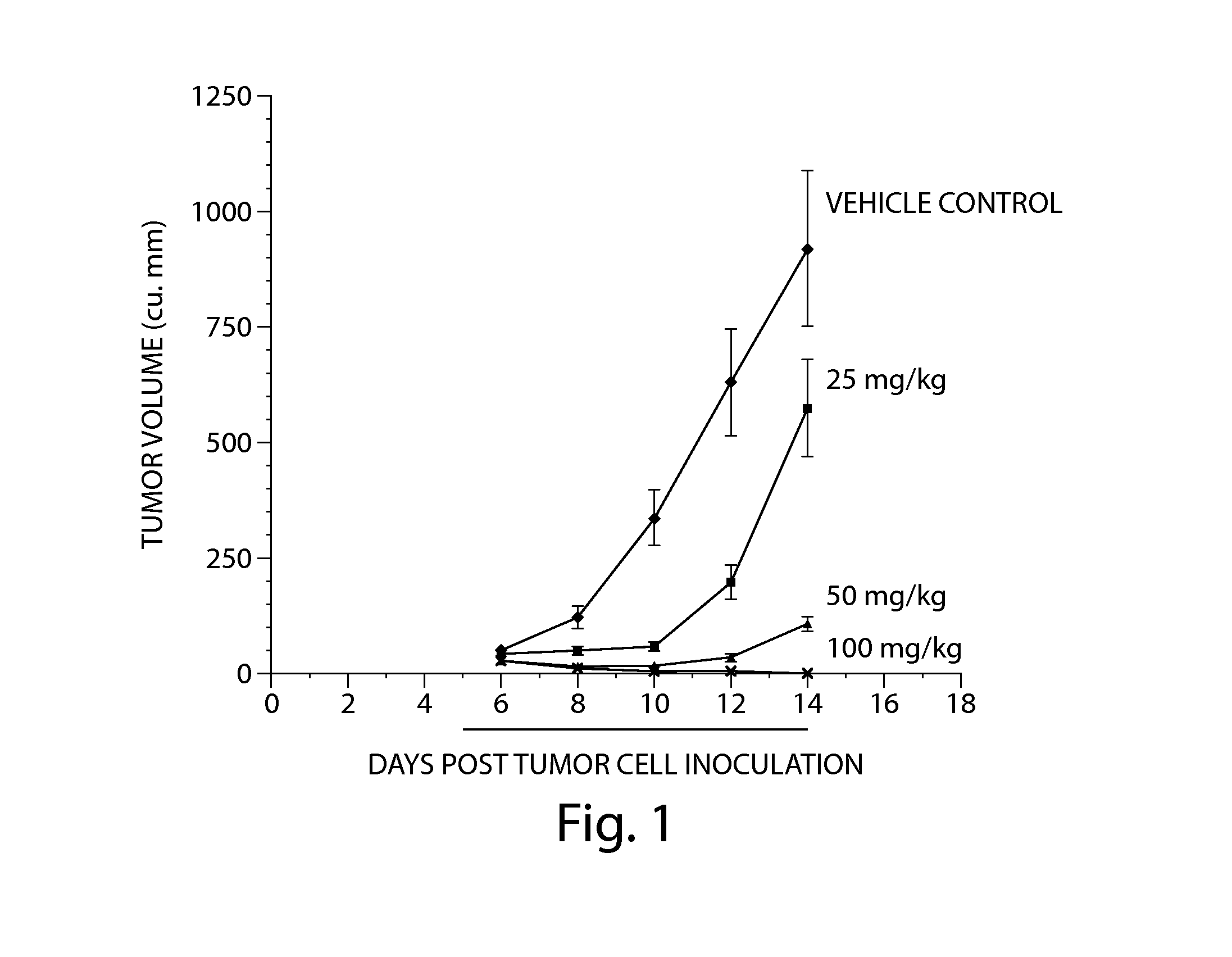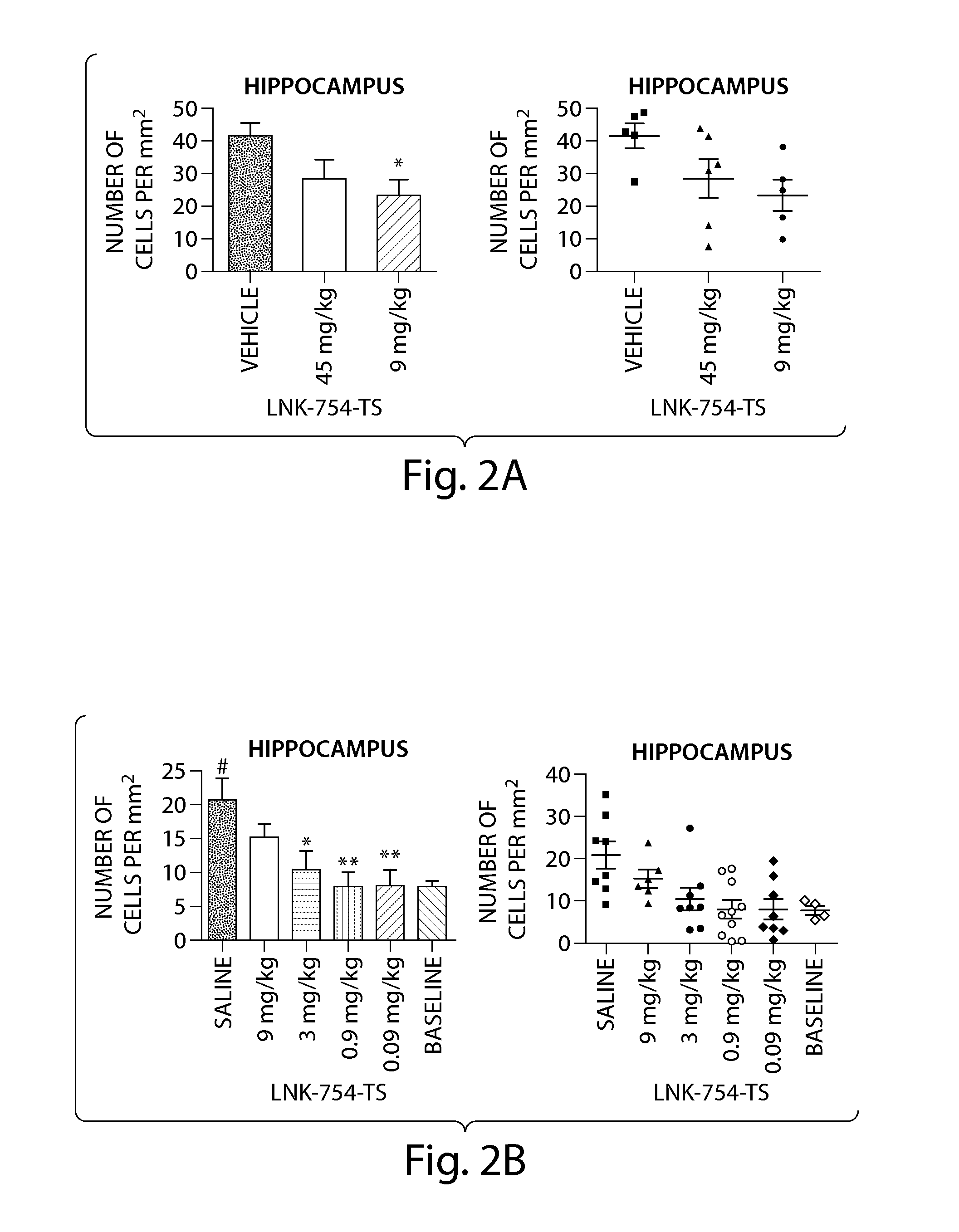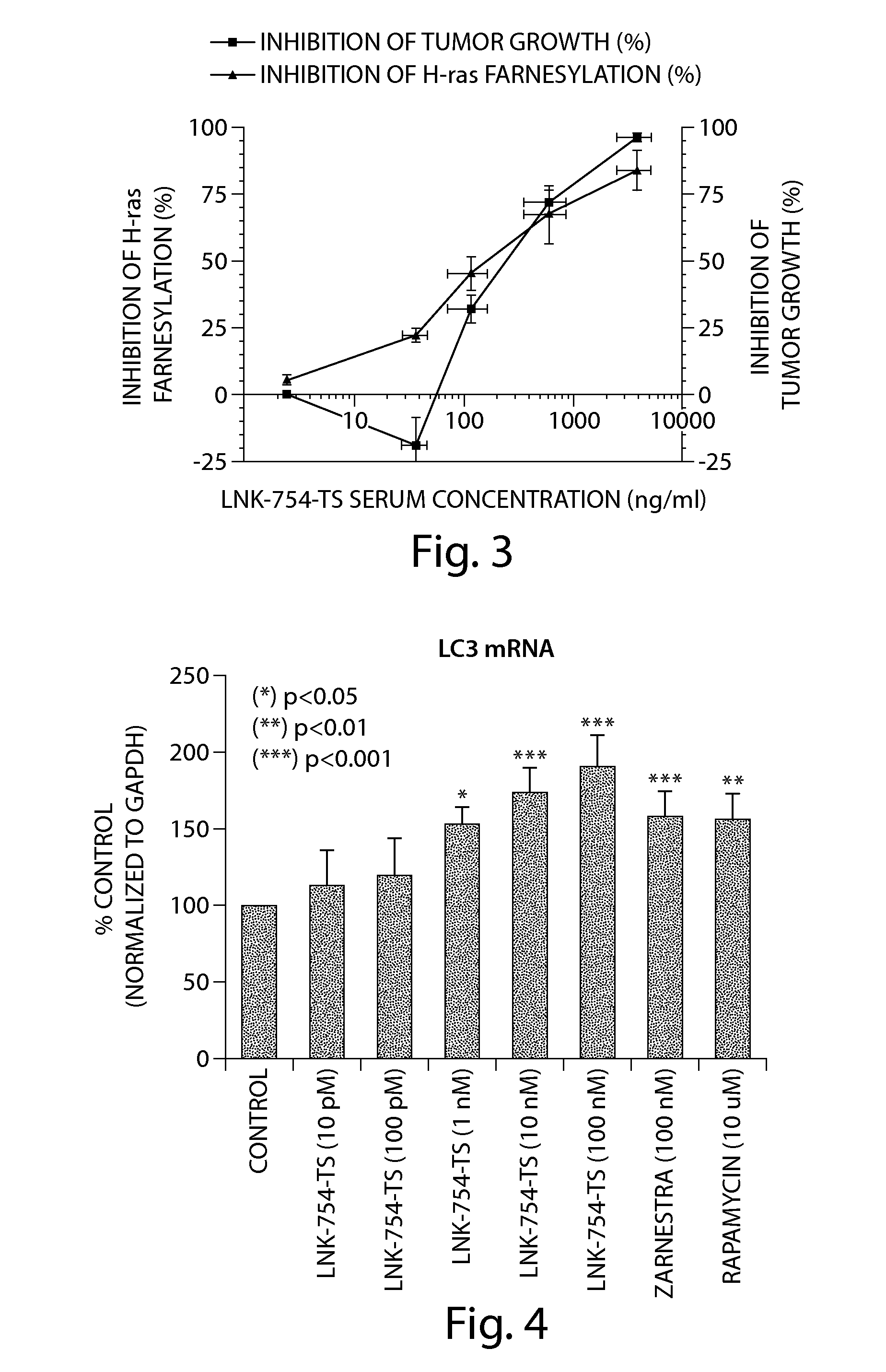Treatment of proteinopathies using a farnesyl transferase inhibitor
a technology of farnesyl transferase and proteinopathies, which is applied in the direction of drug composition, immunological disorders, metabolism disorders, etc., can solve the problems of cell death, achieve the effect of reducing the levels of -synuclein in the hippocampus, reducing the number of -synuclein-positive neurons, and reducing the number of -synuclein inclusions
- Summary
- Abstract
- Description
- Claims
- Application Information
AI Technical Summary
Benefits of technology
Problems solved by technology
Method used
Image
Examples
example 1
Preparation of LNK-754-TS
[2636]The synthesis of LNK-754-TS (D-tartrate salt) is shown below in Schemes 1 and 2. The synthesis starts with the preparation of the ketone material 8. The synthesis of this material is shown in Scheme 1.
[2637]The GMP stage of the synthesis is shown in Scheme 2 and begins with a Sonogashira palladium-catalyzed coupling reaction [Step (h)]. In this reaction the trimethylsilyl acetylene group is coupled to the bromo-ketone (8).
[2638]The resulting product (10) then undergoes a Grignard reaction [Scheme 2, Step (j)] with 5-bromo-1-methyl-1H-imidazole, giving 11 as a racemate. Purification of the racemate as its L-tartrate salt [Scheme 2, Step (k)] then gives chirally pure trimethylsilyl acetylene (11A). This compound is finally deprotected with sodium hydroxide and crystallized as its D-tartaric acid salt to produce LNK-754-TS [Scheme 2, Step (l)].
[2639]A narrative description of the manufacturing process, referring to Scheme 2, is provided below.
[2640]Step 1...
example 2
Preparation of Zarnestra®
[2660]Zarnestra® can be prepared according to the procedure described in WO 97 / 21701.
example a.1
[2661]1a) N-Phenyl-3-(3-chlorophenyl)-2-propenamide (58.6 g) and polyphosphoric acid (580 g) were stirred at 100° C. overnight. The product was used without further purification, yielding quant. (±)-4-(3-chlorophenyl)-3,4-dihydro-2(1H)-quinolinone (interm. 1-a).
[2662]1b) Intermediate (1-a) (58.6 g), 4-chlorobenzoic acid (71.2 g) and polyphosphoric acid (580 g) were stirred at 140° C. for 48 hours. The mixture was poured into ice water and filtered off. The precipitate was washed with water, then with a diluted NH4OH solution and taken up in DCM. The organic layer was dried (MgSO4), filtered off and evaporated. The residue was purified by column chromatography over silica gel (eluent:CH2Cl2 / CH3OH / NH4OH 99 / 1 / 0.1). The pure fractions were collected and evaporated, and recrystallized from CH2Cl2 / CH3OH / DIPE, yielding 2.2 g of (±)-6-(4-chlorobenzoyl)-4-(3-chlorophenyl)-3,4-dihydro-2(1H)-quinolinone (interm. 1-b, mp. 194.8° C.).
[2663]1c) Bromine (3.4 ml) in bromobenzene (80 ml) was added d...
PUM
 Login to View More
Login to View More Abstract
Description
Claims
Application Information
 Login to View More
Login to View More - R&D
- Intellectual Property
- Life Sciences
- Materials
- Tech Scout
- Unparalleled Data Quality
- Higher Quality Content
- 60% Fewer Hallucinations
Browse by: Latest US Patents, China's latest patents, Technical Efficacy Thesaurus, Application Domain, Technology Topic, Popular Technical Reports.
© 2025 PatSnap. All rights reserved.Legal|Privacy policy|Modern Slavery Act Transparency Statement|Sitemap|About US| Contact US: help@patsnap.com



